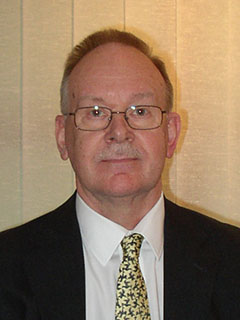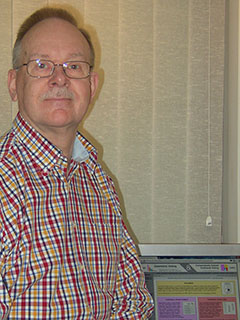Author and Contact Details
Contact via Email
General enquiries, specific comments and feedback on any technical or presentational aspect of this website are warmly welcomed. Including your name and a relevant heading in the subject box, just send an email to:
- Peter Mendenhall at geometric-voting.org.uk.
About the Author

Peter Mendenhall created the Consecutively Halved Positional Voting (CHPV) system and is the author and manager of this Geometric Voting (GV) website.
Although now living in Nottingham England, he was born in South Dorset. He first became interested in politics and elections during a famous parliamentary by-election in South Dorset in 1963 and the subsequent knife-edge UK general election in 1964. The televised discussions between psephologists David Butler and Robert McKenzie were especially spellbinding. He has closely followed all British elections since that time and has regularly had letters about them published in The Guardian newspaper.
In 1981, Peter became a founder member of the Social Democratic Party (SDP) in Great Britain. His disillusionment with two-party politics also extended to its reporting; especially McKenzie's swingometer where the focus is solely on the two 'main' parties. It was following the 1983 general election (where the second- and third-placed parties were almost neck-and-neck) that he independently developed his triangular three-party maps to better reflect the decline in support for the two-party system in the UK. As an amateur psephologist, Peter did not publish his analysis but did circulate it to a variety of organisations at that time.
With only two parties, the First-Past-The-Post voting system is simple and fair. With increasing numbers of significant parties, it becomes crude and unrepresentative. Given the voting trends towards more parties within Great Britain, Peter became a committed electoral reformer for proportional representation and later joined the Electoral Reform Society (that promotes the Single Transferable Vote system).

By education and training, Peter is a professional design engineer specialising in Digital Electronics. He designed Computer Generated Imagery and Visual Simulation systems for Ship and Flight Simulators for two decades and taught his subject to university degree students for two subsequent decades. Some of the projects of his final-year students were based on electronic voting systems. In a few of these, the AV or STV election outcomes were compared to those of a simple positional voting system in which the points were based on the binary number system (that computers and other electronic digital systems use to represent numbers and process numerical calculations).
This simple voting method is in fact the CHPV one! The more Peter investigated this system, the more it appeared to be a significant and serious rival to some other voting systems; both single- and multiple-winner ones. In order to establish whether a common ratio of one half was crucial or arbitrary, the GV algorithm with its variable value of r was developed to enable any critical values for the common ratio to be determined. As demonstrated in this website, the value of one half is indeed the critical threshold for thwarting attempts at teaming.
As Peter is not a professional psephologist, he choose to develop and publish his ideas (now expanded to include GV) via this website to promote ranked ballot CHPV as a simple, elegant and viable voting system for single-winner elections and party-list CHPV for multiple-winner ones. Much of Peter's research is original while other parts are necessarily 're-inventions of the wheel'. He leaves it to professional psephologists to determine which is which. However, all the analysis relating to CHPV and GV contained within this website was independently produced by him (as a very enjoyable hobby). As all the relevant mathematical proofs and other details are provided for inspection, Peter welcomes any and all peer reviews of his evaluations and comparisons.
In March 2023, Peter and his colleague Hal Switkay jointly authored a paper entitled Consecutively Halved Positional Voting: A Special Case of Geometric Voting that was published in the online Social Sciences journal. This peer-reviewed and open-access article is available via this link and a free pdf file can be downloaded.
Return to > General: Table of Contents
